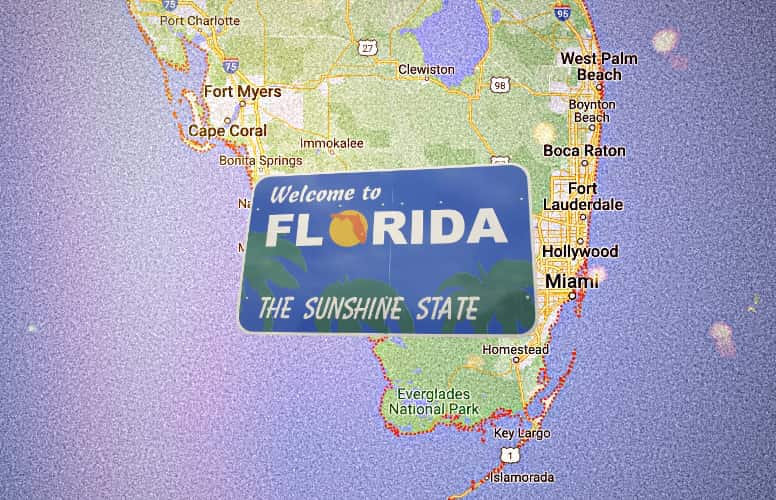Florida insurance rates unlikely to fall, reinsurance a factor: KCC

Property insurance premiums in Florida are not expected to start falling anytime soon, despite the legislative efforts of lawmakers in the state, with reinsurance costs and reinsurers desire to be adequately compensated for the risks a key factor, according to risk modelling firm Karen Clark & Company (KCC).
In a new report, Karen Clark & Company (KCC) points out that most Florida homeowners are “dismayed” by the costs of their property insurance, but says they do not understand what makes up the price they pay.
“Premiums go up when claims and expected losses go up,” the risk modelling firm explains, noting that of the factors that influence insurance pricing, only litigation can be managed by the Florida legislature.
The United States has been hit by four hurricanes with maximum wind speeds of 150 mph in the last five years, two of which struck Florida.
KCC says, “Recent hurricane activity is adding observational support to the findings of the most recent report from the IPCC. This report includes the scientific consensus that hurricane severity is increasing due to global warming. Scientific studies and recent data point to an increase in the proportion of major hurricanes— Category 3, 4, and 5—and more intense storms overall.
“These trends are projected to continue even in the IPCC best-case scenarios, increasing the risk to Florida homeowners and the losses to Florida insurers.”
In addition, Florida has suffered from rising severe convective storm (SCS) losses, KCC explains, as so-called secondary peril losses have increased in the state.
At the same time, construction costs have soared, while rising inflation has also driven exposure values much higher.
“Even if insurance rates don’t increase, homeowners premiums will increase due to the rising costs of construction,” KCC says. “Recent material and labor shortages have caused double digit annual increases in the cost of repairing or replacing a Florida home, and those increases have contributed significantly to the cost of homeowners insurance. Based on current cost indices, the average cost of construction in Florida has increased nearly 40 percent since 2017.”
Litigation in Florida has also been a significant driver of higher costs for insurance and reinsurance companies.
KCC highlights that, “While some level of litigated claims is to be expected for every event, the percentage of litigated claims in Florida has been excessive relative to litigation activity in other states.”
Going on to state, “Comparing Hurricanes Irma and Michael to non-Florida storms, including Laura and Ida, the percentage of litigated claims in Florida has been, on average, 10 times higher than the percentage in other states. There is not as much difference in the relative size of claims—while there is a wide range, on average, litigated claims are about seven times more costly than non-litigated claims.”
KCC believes that the data shows Hurricane Irma and Michael single family home claims were on average 30 to 50 percent higher, than had excess litigation been at more normal levels.
Despite this, KCC is expecting some improvement to the litigation rate in Florida thanks to the legislative efforts to improve insurance in the state.
“KCC’s most recently approved hurricane model includes an explicit factor of 15 percent to account for excess litigation. This factor is much lower than what is indicated by the data from Irma and Michael because it is assumed that recent legislative reforms will significantly reduce excess litigation,” the risk modeller said.
Moving on to reinsurance supply and cost, KCC notes that reinsurance costs make up a significant percentage of Florida’s insurers costs.
The company notes, “Over the past couple of years, reinsurers have been restricting coverage and drastically increasing their prices. Reinsurers base their prices on their own risk appetites and what the market will bear and not on the models. Anyone under the misconception that reinsurers base pricing on the models, need only witness the recent 50 to 100 percent price increases that were clearly not indicated by the models.”
The actions of the reinsurance market will influence future Florida insurance premiums, KCC explained, pointing out that reinsurance company CEO’s have largely indicated that property reinsurance rates will not decline in 2024 and that future increases should also be anticipated.
KCC summarises by saying that the Florida legislature cannot influence insurance premiums on its own, as it cannot control the severe weather, or inflation and construction costs.
“On the other hand, already enacted legislation should have a major impact on excess litigation in Florida, and therefore, significantly mitigate future premium increases. In other words, without the recent legislation, Florida homeowners premiums would be higher,” KCC said.
Which also has some influence on reinsurance costs, as reducing litigation should help to improve the appetite of reinsurers to deploy risk capital in Florida, although it may not cause the price to drop alone.
KCC concludes, “Due to Florida’s unique coastal position and because the population is concentrated along the coast, Florida will be disproportionately impacted by climate change and sea level rise. The only ways to significantly mitigate these impacts are more stringent building codes, retrofitting existing properties, and land use planning.”






